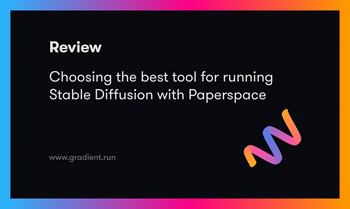Synthetic data is data that mimics real-world processes. To produce synthetic data, advanced AI algorithms utilize deep learning techniques to learn the underlying patterns, structures, and correlations present in real-world datasets. The resulting “synthetic” data shares the same statistical properties as the real-world data from which it was generated, but contains none of the original information.
At first glance, the inherent value of synthetic data may not be apparent. Why simulate reality when the real world is within reach? But let's not forget, real life is complex. Real world data presents challenges in data scarcity, data diversity and data privacy. Synthetic data addresses these issues, offering advantages in areas like planning, testing, research and development.
Often, the use cases regarding synthetic data are unclear, making it difficult to understand its true worth.
Synthetic data use cases are often unclear. So, what exactly are the tangible real-world scenarios that utilize synthetic data? And how can businesses benefit from it? Below, we’ll demonstrate how synthetic data aids scenario simulation, bolsters data diversity and in doing so, lends to more robust machine learning models, ensures data access and availability by masking private and confidential information that should not be shared, and streamlines data sharing, thereby fostering collaboration across industries.
Education
Achieving a deeper understanding of the factors that impact student performance is critical to empowering students to realize their full potential. However, the stringent data privacy regulations that safeguard student information pose a significant challenge to conducting meaningful data analysis. To overcome this challenge, we turn to synthetic data. Synthetic data provides realistic student performance datasets that faithfully mirror the statistical characteristics of actual data, such as learning patterns and academic histories, while safeguarding the anonymity of individual students. Leveraging this synthetic dataset, research teams can explore an array of factors that may influence student success, such as teaching methodologies, learning disabilities and access to educational resources. This in-depth analysis has the potential to unveil hidden patterns and correlations, enabling researchers to propose personalized learning approaches and enhanced teacher training, implement early intervention strategies to reduce dropout rates, and focus on educational resources that demonstrably enhance student outcomes. Additionally, this initiative could drive enhancements in curriculum design, equipping students with the skills to tackle real-world challenges more effectively, and promote increased parental engagement when necessary. Furthermore, this endeavor may encourage more sophisticated assessment methods that prioritize comprehensive student development over standardized testing methods. Undoubtedly, synthetic data has the capacity to shape an educational system that embodies inclusivity, responsiveness to individual needs, and commitment to supporting holistic student growth.
Urban Planning
Addressing the perennial issue of traffic congestion in urban areas requires a systematic examination of commuting behaviors. This analysis hinges on the availability of comprehensive traffic data, which often contains sensitive information, such as individual travel patterns and locations. Synthetic data generation offers a solution by creating datasets that faithfully mimic the distributions, correlations, and patterns observed in the reference dataset, facilitating insightful analysis while masking personally identifiable information (PII). This synthetic traffic data can effectively simulate real-world traffic conditions sourced from both private ride-sharing companies and public transit agencies, providing insight on origin-destination patterns, trip durations, and transportation modes. This information conveys a deeper understanding of urban mobility to policymakers, enabling them to pinpoint areas characterized by heightened demand for public transit services. Adopting a targeted strategy that fosters the expansion and refinement of public transportation routes in these areas could prove to be highly effective in drawing more riders and alleviating traffic congestion. Policymakers could also consider adopting dynamic congestion pricing strategies, which would serve to encourage drivers to adjust their travel schedules to off-peak hours, embrace carpooling, opt for public transportation, or explore alternative routes. This approach promotes a more balanced distribution of traffic throughout the day and reduces congestion during peak periods. Finally, this data-driven approach paves the way for the development of citizen-centric smart city services, cultivating greater community engagement and enhancing the overall quality of urban living.
Climate Change
Against the urgent backdrop of global warming, climate modeling assumes a central role in analyzing the long-term repercussions of climate change. However, this endeavor is riddled with challenges. Acquiring the data needed to comprehensively analyze the climate change process involves collecting data over extended time frames and time zones while maintaining data consistency within an inherently complex climate system. Additionally, it is crucial to research extreme weather occurrences, which are exacerbated by global warming and call for specialized data gathering techniques, given their potential risks. Synthetic data emerges as a powerful solution to mitigate these data collection challenges. Armed with data, researchers can generate climate projections, permitting us to gauge the ecosystem's response to temperature changes and thereby facilitate effective planning. These projections make it possible to assess the expected future heat stress on buildings and transportation systems and plays a pivotal role in assessing the direct and indirect health impacts that stem from global warming. In sum, synthetic data proves invaluable in our mission to address the multifaceted consequences of climate change.
Machine Learning and Large Language Models
Synthetic data proves to be highly advantageous in the realm of machine learning. This advantage becomes even more pronounced when we consider the data scarcity we may potentially face in the future, an issue that's particularly evident in the development of large language models. The benefits that synthetic data bring to the table are many. Firstly, synthetic data generation results in the expansion of the training dataset, thereby greatly enhancing the model's language understanding and generation capabilities. Secondly, synthetic data augmentation may contribute to a more diverse and balanced range of bias and fairness issues, ultimately resulting in models with reduced bias. One illuminating application of this is evident in the realm of multilingual support, which is particularly relevant for languages with limited training data. By facilitating training in such contexts, synthetic data promotes increased diversity and inclusion, which specifically benefits minority language speakers. Finally, synthetic data aids in the assessment of consistent performance across various benchmarks and downstream tasks. This not only validates the robustness of the machine learning model but also reveals potential areas for improvement or fine-tuning. In conclusion, synthetic data is fundamental in advancing the capabilities and fairness of machine learning models, especially when data scarcity is a concern.
Conclusion
While synthetic data offers numerous advantages, it's essential to recognize that it is not a panacea and comes with its set of limitations. One of the key drawbacks to consider is that synthetic data, while designed to protect privacy, may still inadvertently reveal identifying information if not adequately de-identified. This acknowledgment underscores the need for meticulous handling and management of synthetic data to maximize its benefits while mitigating potential risks.
As we increasingly harness the power of data-driven problem-solving with greater precision and structure, the value of synthetic data is clear. Its potential to enhance processes across various sectors make it an invaluable asset in our pursuit of efficient solutions to our most challenging problems.










